Intel further analyzes the design details of the 14th generation Core processor
Intel is set to unveil its 14th generation Core processor, codenamed Meteor Lake, later this year. Built using the Intel 4 manufacturing process, recent updates from the Intel Technology Tour 2023 MTL Tech Day spotlighted its enhanced laptop AI processing capabilities, thanks to the inclusion of a VPU accelerator. This eagerly anticipated processor is slated for a December 14th release.
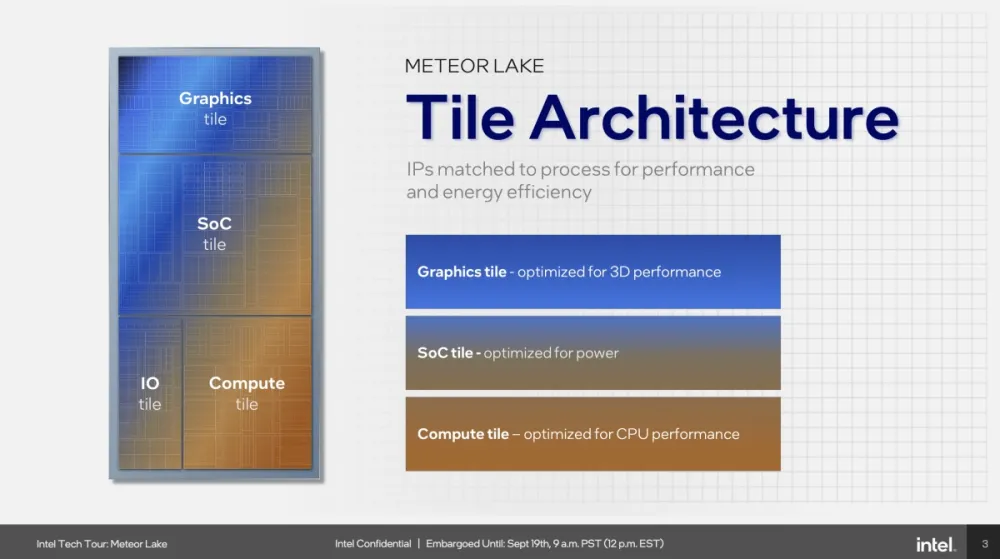
The Meteor Lake processor stands as Intel’s inaugural venture into the Intel 4 manufacturing domain. Its innovative design incorporates both the P Core and E Core structures, seamlessly integrating AI computing components through a 3D hybrid framework. This processor also brings noteworthy improvements to GPU display processing and boasts native Wi-Fi 7 connectivity.
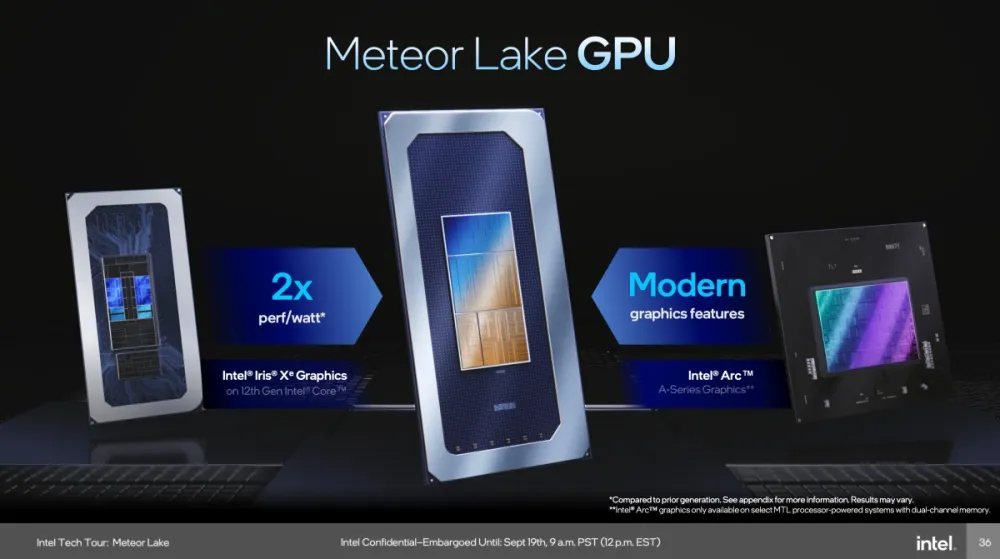
Central to Meteor Lake’s architecture is a low-power consumption E Core configuration, optimizing efficiency through voltage regulation and dynamic frequency adjustments. Intel’s Thread Director technology further amplifies its operational prowess.
Intel’s revamped operational modes for both P and E Cores ensure the P Core operates at minimal single-core with heightened bandwidth, while the E Core excels in multi-core operations, enhancing CPU core operation precision.
Contrasted with the preceding Raptor Lake design, Meteor Lake introduces a power-efficient E Core, resulting in reduced overall energy consumption. This allows most computational tasks to utilize the E Core, calling upon the P Core only for high-demand processes. Such a strategy ensures maximum energy efficiency, extending laptop battery life, while reserving the P Core for more resource-intensive tasks, avoiding unnecessary wastage of computational resources.
In collaboration with Microsoft, Intel has tailored Meteor Lake’s design to ensure optimal compatibility with the Windows 11 operating system. This partnership emphasizes optimal performance, whether the laptop is battery-operated or powered by an adapter, harnessing the full potential of the Meteor Lake architecture.
Graphically, Meteor Lake employs the Xe LPG display design, offering roughly double the performance of its Xe LP counterpart. With real-time ray-tracing capabilities and the integration of the Xe display engine, it supports HDMI 2.1, DisplayPort 2.1, and Embedded DisplayPort 1.4 (eDP 1.4), allowing for up to four display outputs, introducing end-to-end unified compressed outputs, and featuring low-power playback capabilities.
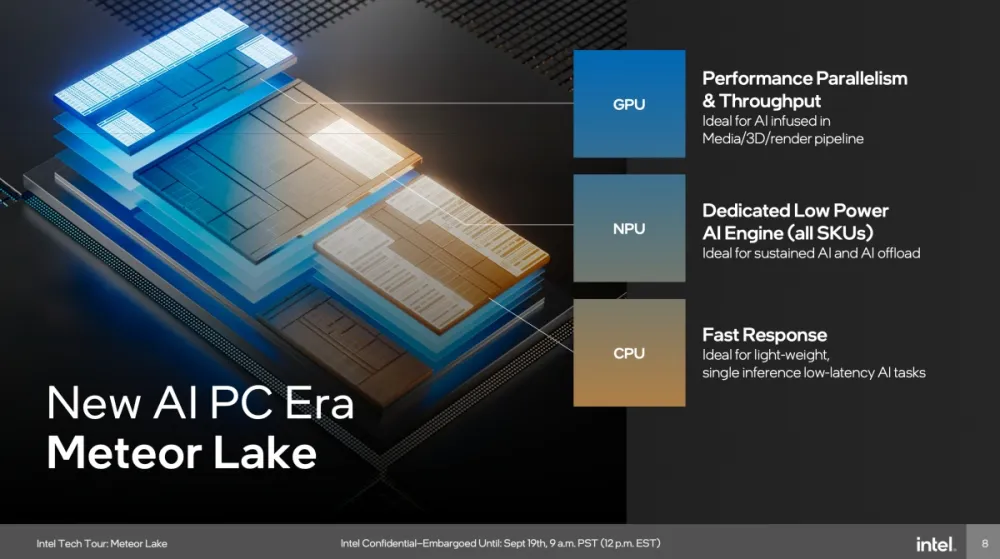
The processor also incorporates AV1 hardware encoding and decoding capabilities, enabling high-definition video output at 8K 60fps 10-bit HDR and supporting maximum 8K 10-bit encoding processes. Software compatibility extends to platforms like Netflix, Microsoft Teams, YouTube, XSplit, and HandBrake.
For AI computations, Intel has confirmed the integration of a VPU computing component within Meteor Lake, operational as an NPU to boost laptop AI capabilities. This encompasses device-level generative AI applications and software-hardware integrations to filter out background noises. Collaborations with industry giants like Adobe, DXO, Unreal Engine, Blender, Zoom, CyberLink, Tencent, and Microsoft aim to maximize the AI capabilities of Meteor Lake through the OpenVINO software stack.
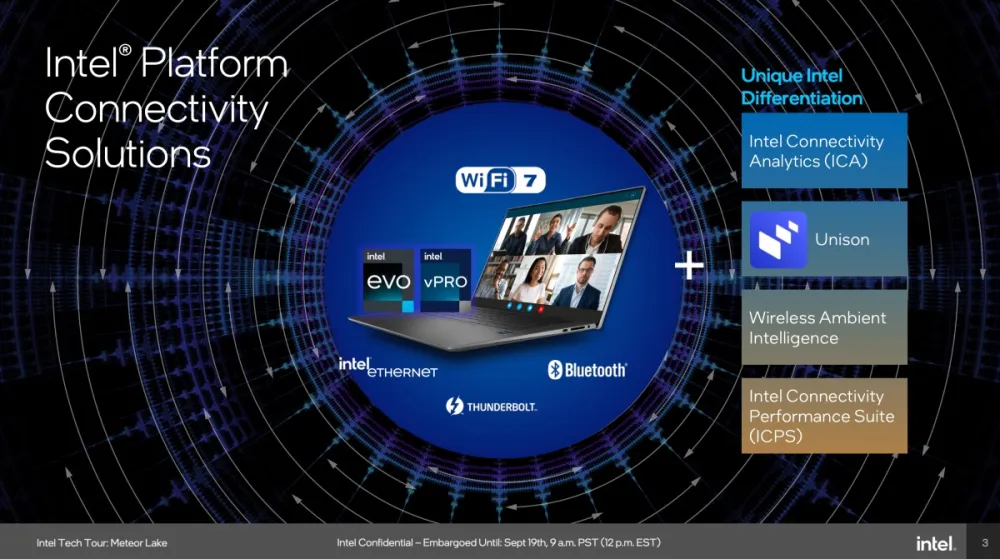
Connectivity-wise, Meteor Lake natively supports Wi-Fi 7, Bluetooth LE Audio, and Intel’s Unison wireless transmission technology, guaranteeing a seamless wireless laptop experience.
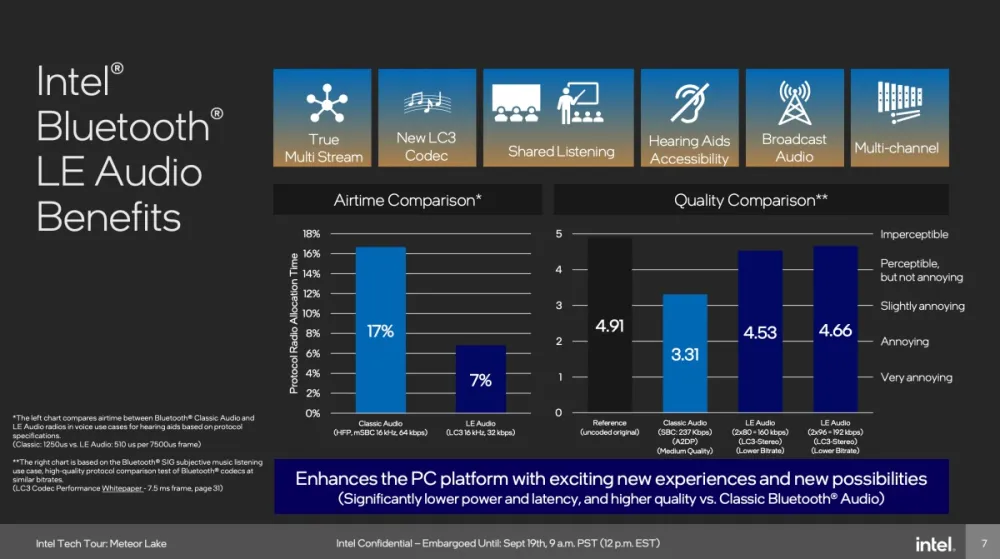
However, due to its release timeline, Meteor Lake retains the integrated Thunderbolt 4, as opposed to the recently announced Thunderbolt 5.
Given Meteor Lake’s focus on laptop optimization, Intel introduces dual-channel airflow and a slimmed-down cooling system, complemented by fan speed controls and power management optimization. This ensures quieter operations, superior cooling, cost-effectiveness, and extended battery longevity.
With an eye on sustainability, laptops powered by the Meteor Lake processor promise higher energy efficiency, ease of maintenance, and longevity. Should these devices reach the end of their lifecycle, their design facilitates easy disassembly and recycling, mitigating environmental impact.

Intel asserts that Meteor Lake integrates over 30 system design technologies, enabling lighter, more flexible laptop designs, and drastically elevating the user experience. Incorporating sustainable design principles ensures laptops not only deliver ample performance but also resonate with eco-conscious users.





